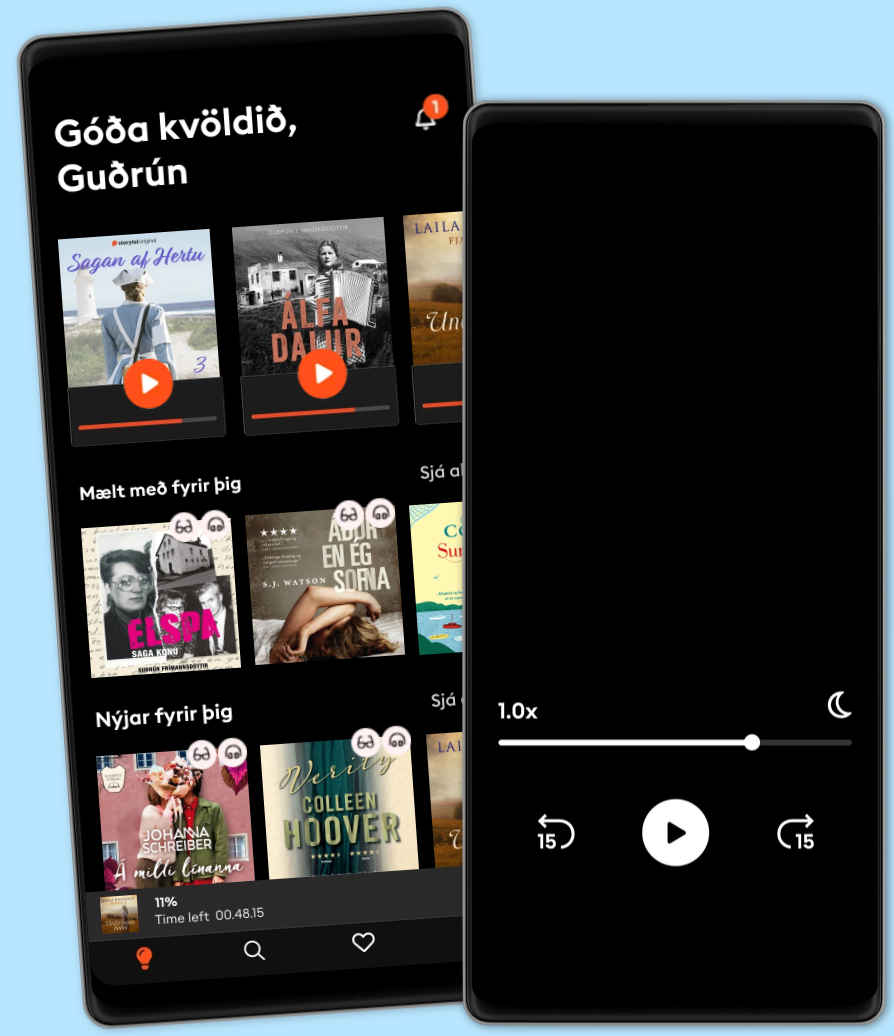Hlustaðu og lestu
Stígðu inn í heim af óteljandi sögum
- Lestu og hlustaðu eins mikið og þú vilt
- Þúsundir titla
- Getur sagt upp hvenær sem er
- Engin skuldbinding

The Spanish and Portuguese in the New World: The History and Legacy of the First European Rivalry in the Americas
- Höfundur
- Lesari
- Útgefandi
- Lengd
- 6Klst. 34Mín.
- Tungumál
- enska
- Format
- Flokkur
Saga
In 1451, Prince Henry the Navigator helped fund and develop a new type of ship, the caravel, that featured triangular lateen sails and would be able to travel in the open ocean and sail against the wind. In 1488, Bartholomew Diaz rounded the southern tip of Africa, named the Cape of Good Hope by King John of Portugal, and entered the Indian Ocean from the Atlantic.
One explorer, Christopher Columbus, sought funding from the Portuguese to search for a passage to Asia by sailing westwards, but he was rejected. At this time in the late 15th century, Portugal’s domination of the western African sea routes prompted the neighboring Crown of Castile and the Catholic monarchs in modern Spain to search for an alternative route to south and east Asia (termed Indies), so they provided Columbus with the funding he required. By the time Christopher Columbus started setting back east from the New World after landing there in October 1492, he had explored San Salvador in the Bahamas (which he thought was Japan), Cuba (which he thought was China), and Hispaniola, the source of gold. As the common story goes, Columbus, en route back to Spain from his first journey, called in at Lisbon as a courtesy to brief the Portuguese King John II of his discovery of the New World. King John subsequently protested that according to the 1479 Treaty of Alcáçovas, which divided the Atlantic Ocean between Spanish and Portuguese spheres of influence, the newly discovered lands rightly belonged to Portugal. To make clear the point, a Portuguese fleet was authorized and dispatched west from the Tagus to lay claim to the “Indies,” which prompted a flurry of diplomatic activity in the court of Ferdinand and Isabella.
© 2024 Charles River Editors (Hljóðbók): 9798868708299
Útgáfudagur
Hljóðbók: 15 februari 2024
Aðrir höfðu einnig áhuga á...
- The Portuguese Empire and Africa: The History and Legacy of Portugal’s Exploration and Colonization of the West African Coast Charles River Editors
- The Anatomy of Fascism Robert O. Paxton
- The Battle of Vienna (1683): The History and Legacy of the Decisive Conflict between the Ottoman Turkish Empire and Holy Roman Empire Charles River Editors
- The Great Siege: Malta 1565 Ernle Bradford
- The Venetians: A New History: From Marco Polo to Casanova Paul Strathern
- When Montezuma Met Cortes: The True Story of the Meeting that Changed History Matthew Restall
- Six Days of War: June 1967 and the Making of the Modern Middle East Michael B. Oren
- The Crusades: The Authoritative History of the War for the Holy Land Thomas Asbridge
- The Sleepwalkers: How Europe Went to War in 1914 Christopher Clark
- The Portuguese Inquisition: The History of the Portuguese Empire’s Religious Persecution of Non-Christians in Portugal and Asia Charles River Editors
- Í þjónustu hins illa Torill Thorup
4.3
- Hvítalogn Ragnar Jónasson
4.1
- Völundur Steindór Ívarsson
4.3
- Næsta stúlkan Carla Kovach
4.1
- Atlas: Saga Pa Salt Lucinda Riley
4.7
- Hundrað dagar í júlí Emelie Schepp
4.3
- Bak við þögla brosið Birgitta H. Halldórsdóttir
3.9
- Frá Hollywood til heilunar Guðný Þórunn Magnúsdóttir
4.4
- Náttfarar Emil Hjörvar Petersen
3.5
- Lífshættulegt loforð Angela Marsons
4.2
- Utan frá sjó, fyrsta bindi Guðrún frá Lundi
4.3
- Lára missir tönn Birgitta Haukdal
4.5
- 17 ástæður til að drepa Unnur Lilja Aradóttir
4
- Það sem við komumst ekki yfir Lucy Score
3.9
- Dauðinn einn var vitni Stefán Máni
4.4
Veldu áskrift
Hundruðir þúsunda raf- og hljóðbóka
Yfir 400 titlar frá Storytel Original
Barnvænt viðmót með Kids Mode
Vistaðu bækurnar fyrir ferðalögin
Unlimited
Besti valkosturinn fyrir einn notanda
1 aðgangur
Ótakmörkuð hlustun
Engin skuldbinding
Getur sagt upp hvenær sem er
Family
Fyrir þau sem vilja deila sögum með fjölskyldu og vinum.
2-6 aðgangar
100 klst/mán fyrir hvern aðgang
Engin skuldbinding
Getur sagt upp hvenær sem er
2 aðgangar
3990 kr /á mánuðiÍslenska
Ísland